I performed the horizontal and vertical filtering operations of the previous post on D810 dark-field images from ISO 100 to ISO 6400 in whole-stop steps. Here’s the result, for horizontal kernels, which preserve vertical features:
And for vertical kernels:
You’ll notice that the horizontal kernel results are more nearly straight lines in the log-log graphs, indicating that the read noise in the horizontal direction is more nearly white. However, in both directions, especially at low ISO’s the noise stops being white within the kernel size, and the curves flatten.
Now let’s see what the curves would look like with the vertical axis referred to the input to the pre-ADC gain stages, so that the units are now electrons in the sensor photosites.
Vertical averaging:
Those of you who have been looking at Sensogen or other sites reporting on D810 read noise will have noticed that the minimum values of the read noise in electrons are about twice as large as those on those sites. That’s because I am using the entire raw image for analysis, and the more usual sample for read noise is a 100×100 or 200×200 pixel block..
Horizontal averaging:
Here’s what the curves would look like if the read noise were white.
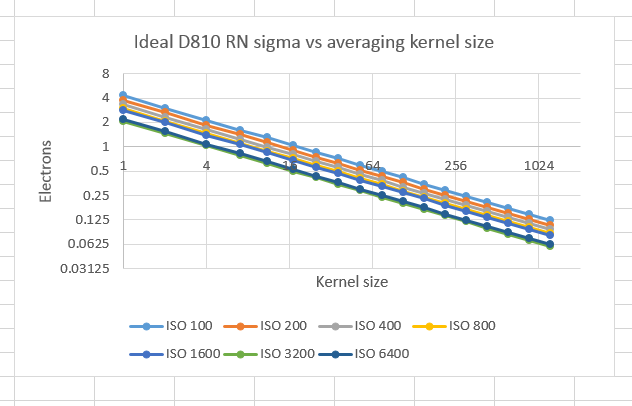
With vertical kernels:
And with horizontal kernels:
If we ignore the ISO 100 case, the low-frequency part of the horizontally-averaged curves are between one and a half and twice what they’d be with ideal noise. The numbers are about twice as bad for the vertically-averaged case.
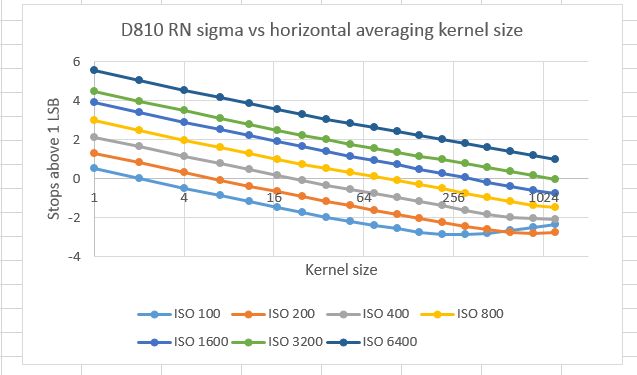
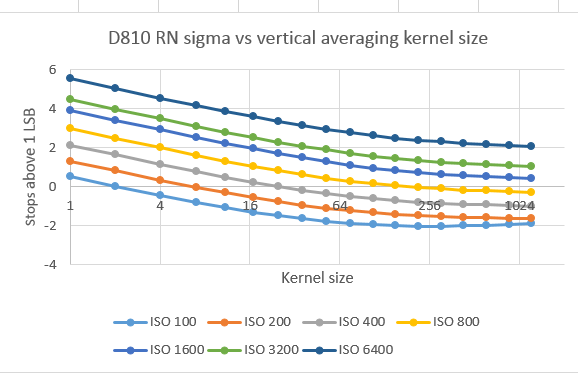
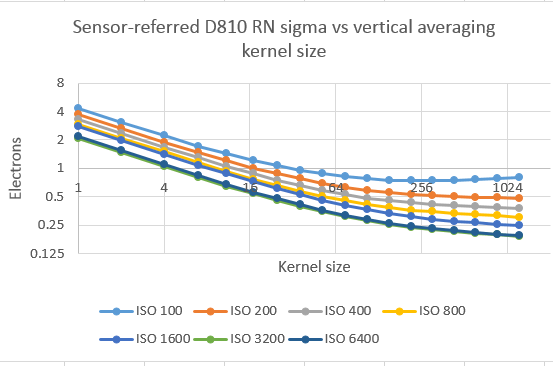
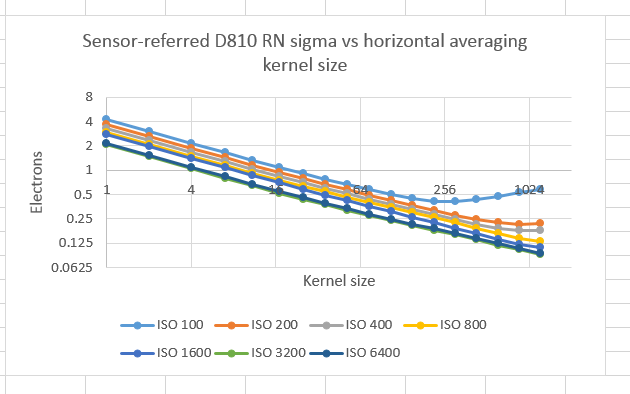
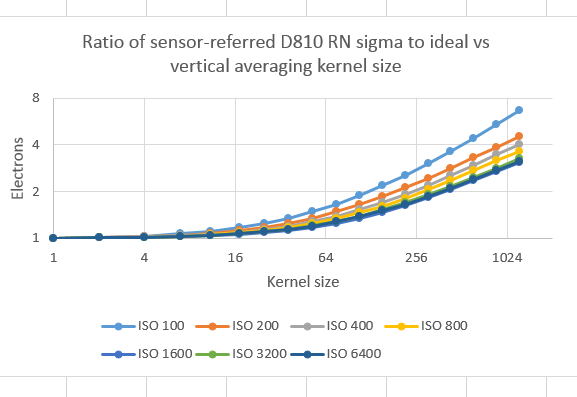
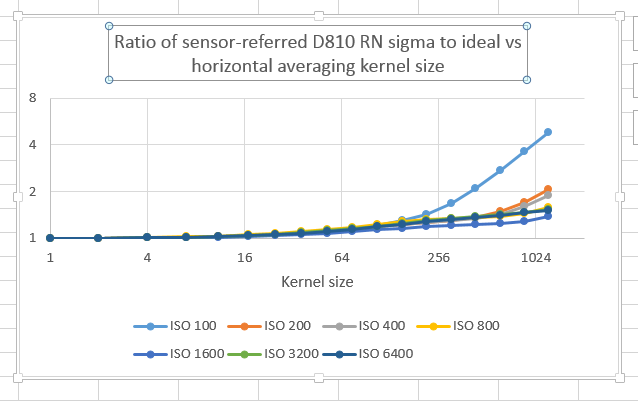
Leave a Reply